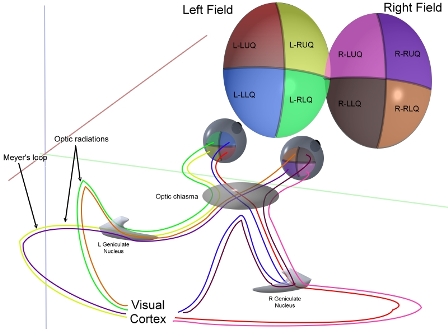Topsy-Turvy, Lefty-Righty
Matthew 7:5
“Thou hypocrite, first cast out the beam out of thine own eye; and then shalt thou see clearly to cast out the mote out of thy brother’s eye.”
You probably remember being taught that the lenses in your eyes turn everything you see upside down on your retina. Your brain then turns these upside-down images right side up, and all is well with the world. But wait until you hear this!
 Not only are the images on your retina upside down, they are also inverted from left to right. As scientist and engineer Werner Gitt tells us in his book The Wonder of Man, “Each half of the observer’s brain receives information from only one half of the image…. The left side of the brain only observes the left half of the image” – which, I might add, is really the right half of what you are looking at.
Not only are the images on your retina upside down, they are also inverted from left to right. As scientist and engineer Werner Gitt tells us in his book The Wonder of Man, “Each half of the observer’s brain receives information from only one half of the image…. The left side of the brain only observes the left half of the image” – which, I might add, is really the right half of what you are looking at.
But your brain needs to do something even more incredible than sort these images out. According to Dr. Gitt, the images are also distorted “because the region around … the fovea, where we see best … forms an image that is ten times as large as that of the peripheral area.” So your brain not only turns each half the right way up, it also needs to remove the distortion. And it performs this task beautifully! Plus, the left and right images are fused together seamlessly and without any trace of a joint!
Though evolutionists get a kick out of criticizing God for His supposedly poor design of the human eye, it is actually evolutionists who aren’t seeing straight!
Prayer: Oh Lord, how can evolutionists who say they don’t even believe You exist criticize You for what they claim to be poor design of the eye? They should really be thanking You for blessing them with the gift of sight! Amen.
Author: Steven J. Schwartz
Ref: Dr. Werner Gitt, The Wonder of Man, p. 17 (Christliche Literatur-Verbreitung e.V., 2nd English edition, 2003). Illustration: This image schematically represents optic pathways from each of the four quadrants of view for both eyes simultaneously. Courtesy of Ratznium. (CC BY 2.5)
© 2016 Creation Moments. All rights reserved.